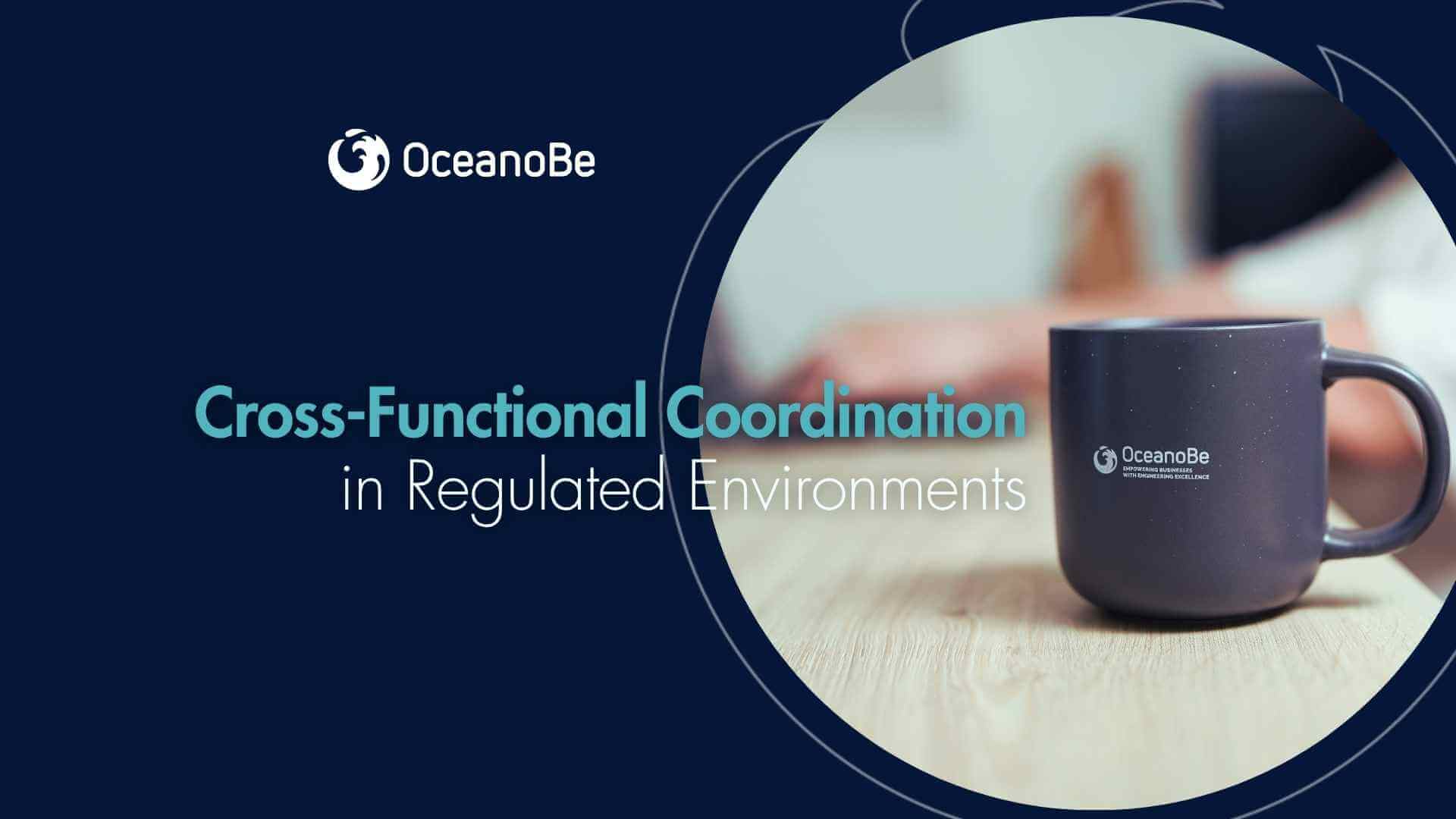Cross-Functional Coordination in Regulated Environments
Best Practices for Fintech PMs
Best Practices for Fintech PMs

In highly regulated industries like banking and payments, coordination between technical and non-technical teams isn’t optional—it’s existential. A product manager or project lead operating in PSD2/PSD3-regulated environments must navigate not only software delivery but also a labyrinth of compliance, audit, and security obligations.
At OceanoBe, we’ve seen how even technically sound projects can stall without clear alignment across compliance, engineering, and business stakeholders. This article explores practical strategies to streamline collaboration, reduce friction, and build audit-ready processes while keeping delivery momentum strong.
In a typical fintech product lifecycle, you have three primary drivers of complexity:
Engineering teams focused on technical delivery and performance.
Compliance and audit teams ensuring every process aligns with PSD2, GDPR, and internal risk frameworks.
Business units aiming to meet market demand, improve customer experience, and ensure profitability.
Each of these functions speaks a different language. The PM’s role becomes one of translation and orchestration—bridging business intent, technical feasibility, and regulatory interpretation into one cohesive delivery rhythm.
In PSD2/PSD3 programs, this challenge intensifies due to mandatory third-party integrations, traceability requirements, and multi-country operational differences. A missed communication can mean a compliance breach or a delayed certification, not just a late sprint.
A core principle for PMs in regulated environments is to make compliance visible, measurable, and continuous. Instead of treating it as an end-of-cycle checklist, integrate compliance from the very start of the project lifecycle.
How to achieve this:
Define “compliance owners” early: Assign clear responsibility for each regulatory area (data privacy, KYC, consent management, audit trails).
Integrate requirements into user stories: Each epic or story should reference relevant compliance and audit requirements.
Automate documentation where possible: Use CI/CD and test pipelines to auto-generate traceability matrices and evidence logs.
This approach helps engineering teams maintain a compliance-aware mindset without adding manual overhead. It also reassures auditors that your processes are proactive, not reactive.
In regulated fintech projects, transparency equals efficiency. Every change, test, or deployment must be explainable—and repeatable. PMs can optimize workflows by:
Centralizing visibility: Tools like Jira, Confluence, and Azure DevOps can serve as the single source of truth, linking requirements, tests, and release notes to audit-ready documentation.
Implementing change control automation: Automate the review and approval of production deployments, capturing timestamps, commit IDs, and responsible roles for each change.
Versioning compliance artifacts: Ensure every release maintains a versioned compliance baseline, including privacy impact assessments (PIAs), risk evaluations, and testing evidence.
By treating compliance artifacts with the same discipline as code, teams reduce audit pain and improve delivery confidence.
Cross-functional coordination thrives on rhythm. The PM’s responsibility is to establish a communication cadence that aligns all stakeholders without overwhelming them.
At OceanoBe, we’ve seen strong results from three-tiered communication models:
Daily syncs for delivery teams (engineering, QA, and DevOps): focused on blockers, dependencies, and progress.
Weekly steering syncs with compliance and product leads: addressing upcoming regulatory checkpoints or risk assessments.
Monthly executive updates summarizing metrics like release readiness, audit preparedness, and test coverage.
These structured touchpoints build predictability into a landscape that often feels chaotic, especially when external regulators or auditors are involved.
PSD2 and upcoming PSD3 requirements emphasize traceability, not just functionality. Every event—login, transaction, consent approval—must be attributable, verifiable, and securely logged.
PMs can help teams stay audit-ready by:
Embedding observability tools that track not just system performance but compliance metrics (e.g., consent latency, fraud detection triggers, security policy adherence).
Automating test evidence generation: When a test passes, capture the logs, payloads, and timestamps as part of the compliance record.
Defining KPIs that merge business and regulatory goals: For example, “Time to Compliance Review” or “Number of Releases with Verified Audit Trails.”
By treating audit deliverables as product outputs, not documentation afterthoughts, teams reduce friction when external reviews happen.
Technical compliance shouldn’t be seen as a constraint; it’s a shared safeguard for business continuity.
Fintech PMs should encourage a culture of joint ownership, where developers, testers, and auditors collaborate, not compete.
How to reinforce this:
Host cross-functional retrospectives that include compliance stakeholders.
Share incident reports transparently across teams.
Celebrate compliance milestones as much as delivery milestones.
At OceanoBe, we’ve helped clients embed compliance within engineering DNA by integrating automated controls into pipelines—turning regulation into a built-in process, not an external constraint.
Working with banks and payment institutions across Europe has shown us that alignment beats speed in the long run.
Rushing to deliver a feature without compliance validation often costs more time later in rework or certification delays.
Our delivery philosophy focuses on three pillars:
Regulatory awareness in architecture: Build platforms that naturally support audit trails and traceable data flows.
Automation-first mindset: Automate testing, documentation, and deployment approvals to reduce human error.
Adaptive governance: Use agile governance structures—lightweight, transparent, and consistent with audit frameworks.
The result? Teams that deliver continuously while staying confidently compliant.
Cross-functional coordination in regulated fintech isn’t just about managing complexity—it’s about creating alignment that builds trust.
When compliance, engineering, and business teams move in sync, delivery accelerates, audits become predictable, and customers benefit from stable, transparent financial products.
For PMs, the goal isn’t to balance speed and control—it’s to architect workflows where both coexist by design.
At OceanoBe, we help banking and fintech organizations build this bridge—empowering teams to ship faster, stay compliant, and evolve confidently in a highly regulated digital landscape.